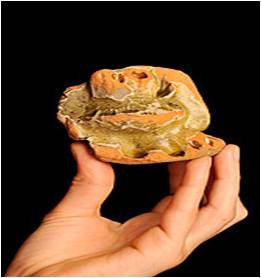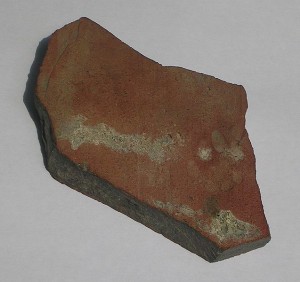Tile Roofs in Medieval England
 This beautiful little number to the left is a terracotta roof finial shaped in the form of an animal. A “mudlark” discovered it in the Thames and alerted the Museum of London, which dated roughly to the 13th century. (The mudlarks are the amateur treasure hunters and archeologists who dig in the Thames. I love that name.) The article is here: http://www.guardian.co.uk/uk/2010/aug/03/medieval-roof-finial-found-thames.
This beautiful little number to the left is a terracotta roof finial shaped in the form of an animal. A “mudlark” discovered it in the Thames and alerted the Museum of London, which dated roughly to the 13th century. (The mudlarks are the amateur treasure hunters and archeologists who dig in the Thames. I love that name.) The article is here: http://www.guardian.co.uk/uk/2010/aug/03/medieval-roof-finial-found-thames.
The museum thinks the finial may have decorated a tile roof. I had no idea that London had terracotta anything, or that they had tiled roofs as far back as the 13th century. Stone tiled floors yes, clay tiled roofs no. Once I thought about it I realized that tile has been around since the ancient world, and I found out that there are extant pieces of roof tile from Roman Britain. The picture to the right is a Roman roof tile discovered in York. An added plus is the cat’s pawprint!
 But I never put clay roof tiles together with medieval England, I assumed that roofs were thatch, stone or slate. It turns out that clay roof tiles had their own name: “thacktyle.” They were mentioned in London building codes as early as 1212 and were almost certainly in use earlier. The tiles replaced extremely fire-prone thatched roofs. By the 15th century they were common enough that laws were passed regulating consistent sizes.
But I never put clay roof tiles together with medieval England, I assumed that roofs were thatch, stone or slate. It turns out that clay roof tiles had their own name: “thacktyle.” They were mentioned in London building codes as early as 1212 and were almost certainly in use earlier. The tiles replaced extremely fire-prone thatched roofs. By the 15th century they were common enough that laws were passed regulating consistent sizes.
My persona lived in early 12th century remote Northumbria. I don’t know that she would have had a tile roof that early and in that backwards of an area, but who knows? Her main house is a manor house that I found mentioned in the Domesday Book. Since the manor existed pre-Invasion, I am assuming that it was built using an Anglo-Saxon method of wattle-and-daub. This type of building would have had a thatch roof, or possibly wooden shingles. A tile roof would be unlikely in this remote manor/farmhouse, but my persona may have seen such a thing when she traveled to crowded York on market days.

Leave a Reply